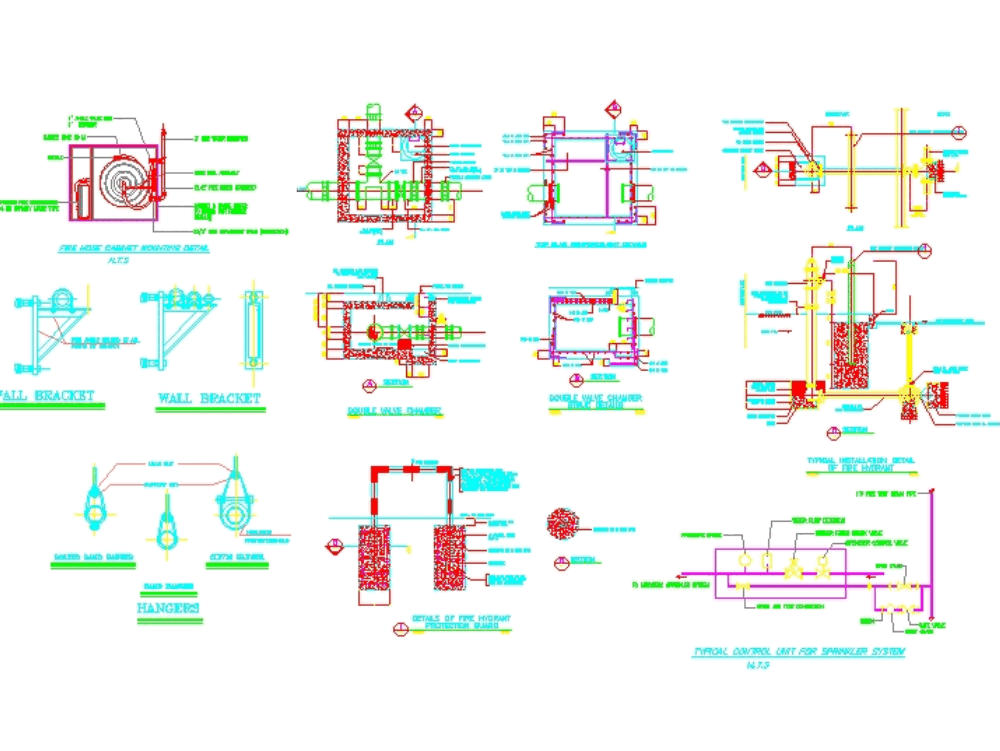Fire Hydrant Autocad Dwg
Contents • • • • • • • • • • • • • Operation The user attaches a to the fire hydrant, then opens a on the hydrant to provide a powerful flow of water, on the order of 350 (50 pounds per square inch gauge (psig)) (this pressure varies according to region and depends on various factors including the size and location of the attached water main). This user can attach this hose to a, which can use a powerful to boost the and possibly split it into multiple streams. One may connect the hose with a connection, instantaneous ' or a. A user should take care not to open or close a fire hydrant too quickly, as this can cause a, which can damage nearby pipes and equipment.
The water inside a charged hose line causes it to be very heavy and high water pressure causes it to be stiff and unable to make a tight turn while pressurized. When a fire hydrant is unobstructed, this is not a problem, as there is enough room to adequately position the hose. Most fire hydrant valves are not designed to throttle the water flow; they are designed to be operated full-on or full-off. The valving arrangement of most dry-barrel hydrants is for the drain valve to be open at anything other than full operation. Usage at partial-opening can consequently result in considerable flow directly into the soil surrounding the hydrant, which, over time, can cause severe scouring. Gate or butterfly valves can be installed directly onto the hydrant orifices to control individual outputs and allow for changing equipment connections without turning off the flow to other orifices. These valves can be up to 12 inches in diameter to accommodate the large central 'steamer' orifices on many US hydrants.
Fire hydrants free AutoCAD drawings. Downloads: 4872. Fire hose reel with hose tap. CAD drawings in plan, front and side view. The Computer-Aided Design ('CAD') files and all associated content posted to this website are created, uploaded, managed and owned by third party users. Each CAD and any associated text, image or data is in no way sponsored by or affiliated with any company, organization or real-world item, product, or good it may purport to portray.
It is good practice to install valves on all orifices before using a hydrant as the protective caps are unreliable and can cause major injury if they fail. When operating a hydrant, a typically wears appropriate, such as and a with face shield worn. High-pressure water coursing through a potentially aging and corroding hydrant could cause a failure, injuring the firefighter operating the hydrant or bystanders. In most jurisdictions it is illegal to park a car within a certain distance of a fire hydrant.

In North America the distances are commonly 3 to 5 m or 10 to 15 ft, often indicated by yellow or red paint on the curb. The rationale behind these laws is that hydrants need to be visible and accessible in an emergency. Other uses To prevent casual use or misuse, the hydrant requires special tools to be opened, usually a large wrench with a pentagonal socket. Vandals sometimes cause monetary loss by wasting water when they open hydrants. Such vandalism can also reduce municipal water pressure and impair firefighters' efforts to extinguish fires. Sometimes those simply seeking to play in the water remove the caps and open the valve, providing residents a place to play and cool off in summer.
However, this is usually discouraged as residents have been struck by passing automobiles while playing in the street in the water spray. In spite of this, some US communities provide low flow heads to enable residents to use the hydrants to cool off during hot weather, while gaining some control on water usage. Buku islam pdf.
Most fire hydrants in are protected by a silver-coloured cover with a red top, secured to the ground with bolts to protect the hydrant from vandalism and unauthorized use. The cover must be removed before use. In most areas of the United States, contractors who need temporary water may purchase permits to use hydrants.
